
Jordan Journal of Civil Engineering
Scope & Guideline
Advancing the Frontiers of Civil Engineering
Introduction
Aims and Scopes
- Infrastructure Development and Management:
The journal explores various aspects of infrastructure, including the design, management, and maintenance of transportation systems, buildings, and urban environments, reflecting the need for sustainable and efficient infrastructure solutions. - Material Science and Engineering:
Research on the properties, performance, and innovative applications of construction materials, including concrete, asphalt, and recycled materials, is a core focus, highlighting advancements in material technology for improved durability and sustainability. - Geotechnical Engineering and Soil Mechanics:
The journal publishes studies on soil behavior, ground improvement techniques, and geotechnical analysis, addressing challenges in construction and environmental sustainability in various soil conditions. - Environmental Engineering and Water Resources:
Papers related to water quality assessment, flood management, and environmental impacts of construction practices are prevalent, indicating a commitment to addressing pressing environmental issues within civil engineering. - Traffic and Transportation Engineering:
Research on traffic safety, noise modeling, and transportation systems optimization reflects the journal's commitment to enhancing urban mobility and safety for road users. - Structural Engineering and Analysis:
The journal features studies on the performance, design, and analysis of structures under various loading conditions, emphasizing innovative design methods and the use of advanced materials.
Trending and Emerging
- Sustainable and Eco-friendly Materials:
There is a notable increase in research focusing on the use of recycled materials and sustainable construction practices, reflecting a global push towards environmentally responsible engineering solutions. - Advanced Computational Techniques:
The application of machine learning, artificial intelligence, and deep learning for predictive modeling and analysis in civil engineering is on the rise, showcasing the integration of technology in engineering practices. - Risk Assessment and Management in Construction:
Emerging themes in risk analysis, particularly concerning environmental and safety risks in construction projects, highlight the importance of proactive management strategies in complex construction environments. - Smart Infrastructure and IoT Applications:
Research exploring the integration of smart technologies and the Internet of Things (IoT) in infrastructure management is gaining momentum, indicating a shift towards intelligent and responsive urban systems. - Climate Resilience and Adaptation Strategies:
Increasing focus on climate change impacts and the development of adaptive strategies for infrastructure resilience demonstrates a growing recognition of environmental challenges facing civil engineering.
Declining or Waning
- Traditional Construction Practices:
Research focused on conventional construction methods and materials has decreased, as there is a growing shift towards innovative and sustainable construction techniques. - Basic Hydraulics and Fluid Mechanics:
While hydraulics remains a critical area, the focus on basic principles and traditional methods has waned, with more emphasis now placed on advanced modeling and simulation techniques. - Static Structural Analysis without Modern Methods:
The decrease in studies employing classical static analysis methods suggests a trend towards more dynamic and complex analyses using computational methods and software. - Urban Planning without Technological Integration:
Research that does not incorporate modern technology, such as GIS or data analytics in urban planning, is becoming less common, reflecting the need for data-driven decision-making in urban development.
Similar Journals
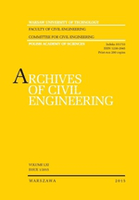
Archives of Civil Engineering
Unlocking Insights in Civil and Structural EngineeringArchives of Civil Engineering is a premier academic journal published by POLISH ACAD SCIENCES, dedicated to advancing the field of civil and structural engineering. Established in 1996, this open-access journal has been pivotal in disseminating high-quality research and innovation in engineering practices, particularly since adopting open access in 2010. With an ISSN of 1230-2945 and E-ISSN of 2300-3103, it enjoys a notable reputation, currently ranked in Q3 of the Civil and Structural Engineering category for 2023, reflecting its considerable contribution to scholarly content in the discipline. The journal caters to a diverse audience of researchers, professionals, and students, providing them with a platform to share and access essential findings. Its commitment to high academic standards is underscored by its ranking in Scopus, where it stands at Rank #265/379. Located in Warsaw, Poland, the journal aims to promote international collaboration and foster knowledge exchange in civil engineering, making it an indispensable resource for anyone involved in this dynamic field.

International Journal of GEOMATE
Connecting theory and practice in geotechnical and environmental engineering.The International Journal of GEOMATE, published by GEOMATE INT SOC based in Japan, is a pivotal resource for scholars and practitioners in the fields of Building and Construction, Environmental Engineering, Geotechnical Engineering, and Soil Science. Established in 2011 and continuing to set the standard in its focus areas, this journal serves as a platform for innovative research and practical applications, with contributions that significantly enhance the understanding and development of sustainable engineering practices. With its current classification in the Q3 quartile across multiple categories, it strives to disseminate critical knowledge and foster dialogue among a diverse audience, including researchers, industry professionals, and students. Though operating under a traditional subscription model, the journal's emphasis on rigorous peer review and high-quality publications ensures a substantial impact factor, further reinforcing its reputation in academia. Spanning from 2011 to 2024, the International Journal of GEOMATE invites contributions that advance the knowledge frontier and address contemporary challenges in engineering and environmental science.

Civil Engineering Journal-Tehran
Elevating Global Standards in Civil and Structural Engineering.Civil Engineering Journal-Tehran is a premier academic publication focusing on the dynamic fields of civil engineering, construction, and environmental science. Published by C EJ PUBLISHING GROUP, this journal has garnered significant recognition, reflected in its impressive quartile rankings—ranking Q1 in Building and Construction and Civil and Structural Engineering, and Q2 in Environmental and Geotechnical Engineering. With its ISSN 2676-6957 and E-ISSN 2476-3055, this journal serves as a crucial platform for disseminating innovative research and advancements from 2019 through 2024. Notably situated at K N Toosi University of Technology in Tehran, Iran, it emphasizes both local and global perspectives on civil engineering challenges. Aiming to foster scholarly discourse, the journal is essential for researchers, students, and professionals dedicated to the evolution and sustainability of civil engineering practices.

Turkish Journal of Civil Engineering
Transforming Ideas into Engineering ExcellenceWelcome to the Turkish Journal of Civil Engineering, a pioneering publication under the auspices of the TURKISH CHAMBER OF CIVIL ENGINEERS, dedicated to advancing the field of civil engineering and construction. With a focus on cutting-edge research and innovative practices, this journal seeks to provide a platform for scholars, professionals, and students to share their findings and insights within the sphere of civil and structural engineering. The journal is committed to open access, ensuring that research is readily available to a global audience. As it embarks on its journey from 2023 to 2024, it aims to enhance its reputation as a vital resource within the academic community, currently ranking in the 40th percentile for Building and Construction Engineering and 32nd for Civil and Structural Engineering in Scopus. We encourage contributions that push the boundaries of engineering knowledge, fostering collaboration and progress in this essential field.

Civil Engineering Journal-Stavebni Obzor
Fostering Collaboration for a Sustainable FutureWelcome to the Civil Engineering Journal-Stavebni Obzor, an esteemed academic publication dedicated to advancing the field of civil engineering. Published by the Czech Technical University in Prague, Faculty of Civil Engineering, this journal has provided a platform for innovative research and critical discourse since its inception. With an ISSN of 1210-4027 and an E-ISSN of 1805-2576, this Open Access journal has been facilitating wide dissemination of knowledge in civil engineering since 2014, ensuring that valuable research reaches a global audience without barriers. The journal is committed to fostering collaboration among researchers, professionals, and students, encouraging the exchange of ideas that drive the discipline forward. Its diverse scope encompasses various aspects of civil engineering, making it an essential resource for anyone looking to stay at the forefront of this dynamic field. Located in Prague, a hub of engineering excellence, this journal not only reflects the latest trends and innovations but also contributes to shaping the future of civil engineering.
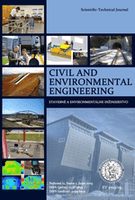
Civil and Environmental Engineering
Innovating solutions for a resilient environment.Civil and Environmental Engineering, published by SCIENDO, is a prominent open-access journal dedicated to advancing research and knowledge in the fields of civil and structural engineering, as well as environmental engineering. Since its inception in Germany, it has been committed to promoting cutting-edge studies and methodologies that address the pressing challenges in these domains. With an ISSN of 1336-5835 and E-ISSN of 2199-6512, the journal is accessible to a global audience, having adopted an open-access policy since 2014 to enhance the visibility and dissemination of scholarly work. The journal currently holds a Q3 ranking in both Civil and Structural Engineering and Environmental Engineering, as of 2023, reflecting its growing influence within the academic community. It operates within a framework of rigorous peer-review standards and encourages contributions that not only contribute to theoretical advancements but also have practical implications for real-world applications. Researchers, professionals, and students alike will find invaluable insights and innovative perspectives in the latest studies published from 2018 to 2024.
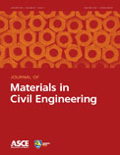
JOURNAL OF MATERIALS IN CIVIL ENGINEERING
Empowering Engineers with Cutting-Edge Material InsightsJOURNAL OF MATERIALS IN CIVIL ENGINEERING is a highly regarded publication within the field of civil engineering, published by the ASCE-American Society of Civil Engineers. This journal, which has been actively contributing to the discourse in building and construction materials since 1989, has established itself as a vital resource for researchers and practitioners alike, evidenced by its impressive Q1 rankings across multiple categories, including Building and Construction, Civil and Structural Engineering, Materials Science, and Mechanics of Materials as of 2023. With a strong focus on innovation and application in materials technology, it provides insights that are paramount for advancing practices in civil engineering. The journal's commitment to disseminating high-quality research is reflected in its exceptional standing within Scopus, where it ranks in the top quartile of its respective fields. Although not an open-access journal, it remains an essential platform for disseminating impactful research findings and fostering professional development in the materials science community. For more information or to explore the latest publications, researchers can access the journal through the ASCE library.
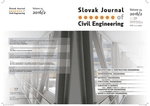
Slovak Journal of Civil Engineering
Innovating infrastructure: Bridging theory and practice.Welcome to the Slovak Journal of Civil Engineering, a premier open-access publication dedicated to advancing the field of civil engineering. Published by SCIENDO, this journal has been providing a platform for the dissemination of groundbreaking research since 2010, ensuring that all articles are freely accessible to a global audience. With a commitment to promoting innovation and excellence within civil engineering, the journal covers a wide range of topics, including structural engineering, transportation systems, geotechnics, and environmental engineering. The Slovak Journal of Civil Engineering is designed to engage a diverse community of researchers, professionals, and students, fostering collaboration and knowledge-sharing to address contemporary challenges in the field. With its open-access model, the journal not only enhances visibility for authors but also ensures that the latest findings and methodologies reach practitioners and academics alike, making it an essential resource for anyone interested in civil engineering advancements. Stay connected with the evolving landscape of civil engineering through this influential publication.
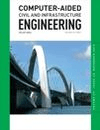
COMPUTER-AIDED CIVIL AND INFRASTRUCTURE ENGINEERING
Empowering Research for Smart Infrastructure DevelopmentCOMPUTER-AIDED CIVIL AND INFRASTRUCTURE ENGINEERING, published by WILEY, stands as a leading journal in the domains of civil and structural engineering, computational theory, and computer-aided design since its inception in 1986. With an impressive ISSN of 1093-9687 and E-ISSN of 1467-8667, this esteemed UK-based journal holds a prestigious position in the academic community, reflected by its Q1 ranking in numerous relevant categories, including Civil and Structural Engineering and Computer Graphics as of 2023. The journal is renowned for promoting innovative research that utilizes computational techniques to solve complex engineering problems, making it an essential resource for researchers, professionals, and students alike. Despite its lack of open access options, the journal garners significant interest due to its rigorous peer-review process and high-impact articles, underlining its importance in the advancement of infrastructure engineering practices and technologies. With a Scopus ranking placing it among the top journals in various engineering and computer science fields, COMPUTER-AIDED CIVIL AND INFRASTRUCTURE ENGINEERING continues to foster knowledge and collaboration, ultimately contributing to the future of smart and resilient infrastructure development.

Innovative Infrastructure Solutions
Connecting Innovators for a Greener Infrastructure Tomorrow.Innovative Infrastructure Solutions is a leading academic journal published by Springer International Publishing AG, focusing on pioneering advancements in the fields of building and construction, civil and structural engineering, and environmental engineering. With an impact factor that reflects its significant role in the academic community, this journal serves as a vital platform for researchers, professionals, and students to disseminate groundbreaking studies and novel methodologies spanning diverse engineering disciplines. Since its inception in 2016, Innovative Infrastructure Solutions has steadily positioned itself within the Q2 category across several fields, including geotechnical engineering and engineering geology, as recognized in the 2023 quartiles. This reputable journal, accessible from Switzerland, not only emphasizes collaboration and knowledge exchange but also empowers innovators in infrastructure development globally. Whether you're contributing to a research project or seeking the latest findings, Innovative Infrastructure Solutions remains essential for anyone invested in advancing sustainable infrastructure solutions.